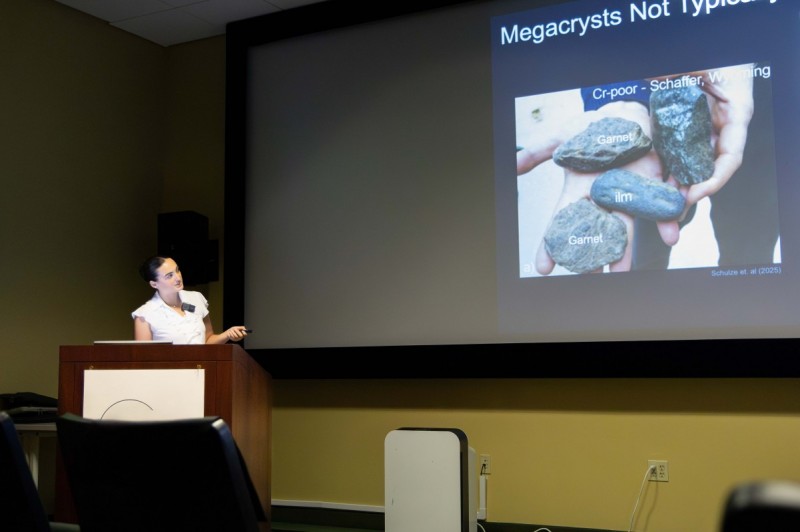
Binghamton University senior Kate Halpin has delved into the mysteries of diamond formation deep beneath the Earth’s surface through a summer internship at Carnegie Science in Washington, D.C. Her research offers new insights into the geological processes that shape these precious stones, often seen as a window into the planet’s hidden depths.
Halpin’s journey into geology was sparked by her love for the outdoors and a transformative class on earthquakes and volcanoes with Associate Professor Alex Nikulin during her freshman year. “I realized that it was something I wanted to pursue. The more I learn about geology, the more I’m curious about it,” Halpin, a geology major, explained.
Investigating Geological Paradoxes
During her 10-week internship, Halpin tackled a geological paradox involving rocks from the Liqhobong kimberlite pipe in Lesotho, Africa. Despite the rocks’ composition not being traditionally favorable for diamond formation, they contained diamonds scattered like raisins in bread. This phenomenon intrigued Halpin and her team.
“The kimberlite eruption carries the diamonds from depths that we can’t access up to the surface, and that’s how we can study them,” Halpin explained. This unique process allows researchers to peer into deep Earth processes, using diamonds as a geological lens.
Advanced Techniques and Discoveries
To unravel the secrets of these diamonds, Halpin employed cutting-edge technology, including an electron microprobe and nanoscale secondary ion mass spectrometry (NanoSIMS), to analyze mineral compositions and carbon isotopes. The team also used cathodoluminescence spectroscopy and Fourier Transform Infrared Spectroscopy (FTIR) to study the diamonds’ growth history and chemical bonds.
Preparing diamond samples for these analyses presented its own challenges. “Given that diamonds are the most scratch-resistant mineral in the world, polishing was no simple task,” Halpin noted. “This involved a significant amount of trial and error using various techniques, and ultimately using a diamond polishing wheel and ion milling machine.”
Unveiling Earth’s Hidden Stories
Beyond diamonds, Halpin’s research extended to garnets in the host rock, which form under similar conditions. The inclusions within the diamonds revealed chemical fingerprints of subducting oceanic crust and recycled sediments, while the host rock had a different origin. “The diamonds formed under completely different conditions than the host rocks did and at different times,” Halpin explained. “We’re still trying to understand the processes of formation.”
Throughout her internship, Halpin collaborated with peers and Carnegie scientists, presenting research findings and attending seminars on scientific communication and graduate school preparation. Back at Binghamton, she continues to analyze data and prepare a manuscript for publication.
Looking Ahead
Halpin is set to present her findings at the 2025 American Geophysical Union’s annual meeting in New Orleans, marking her first conference experience. “It’s been such a great summer,” Halpin reflected. “I’ll definitely never forget it.”
Her work at Carnegie Science will also inform her senior thesis, where she will explore fluid inclusions in salt crystals with Distinguished Professor Tim Lowenstein. “Kate Halpin’s lab work and depth of understanding stand with the very best students in Earth Science,” Lowenstein praised. “It is great to see Kate get a career start at Carnegie Science and come back to Binghamton, a ‘new’ person enthusiastic to begin a senior thesis project.”
Future Aspirations
This fall, Halpin plans to apply to doctoral programs in geochemistry, with aspirations of teaching, research, or both. “Many researchers collaborate with NASA to answer questions in both geochemistry and planetary science. I’ve always been fascinated by space, and this is something that I would love to explore further,” she said.
At Carnegie, Halpin encountered scientists who utilize meteorites to uncover clues about the solar system’s formation and planetary history. “If I could do that in some capacity, it would be incredibly fulfilling,” she added, envisioning a future where her passion for geology and space could intersect.






